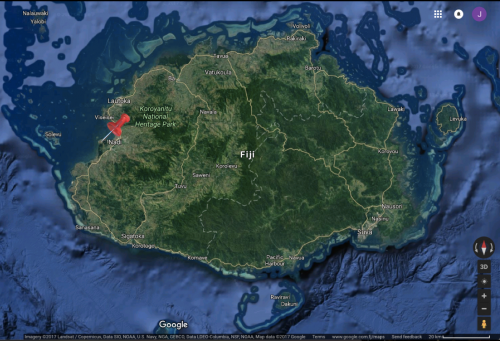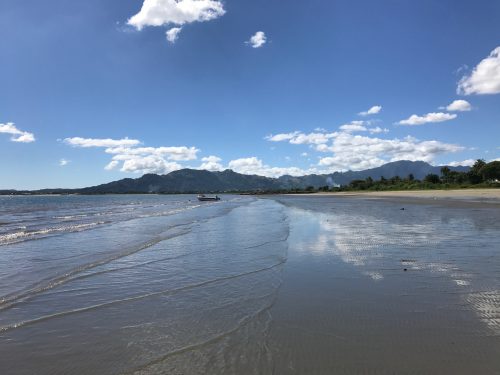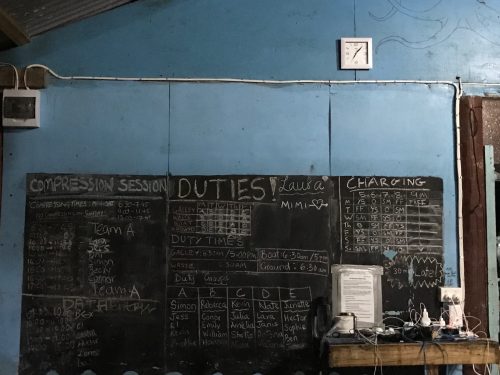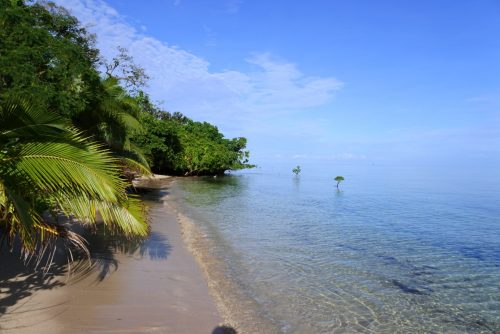
Traveling from the north Atlantic to the south Pacific, Fiji (GMT +12) was my fourth time zone within four days. Days and nights faded into one another, and the date became but an abstract concept in my mind. It was both disorienting and quite therapeutic.
I arrived in Fiji a day before the start of my project. Much of my first day in Fiji was dedicated to polishing the fine skill of waiting. Waiting for my delayed flight, waiting to get my SIM card, waiting for my hostel to pick me up at the airport, waiting for the hostel get my room ready. Despite being one of the first nations in the world where the sun rises every morning, time passes slowly here, as though the hands of the clock have to turn against the billowing offshore winds.

Waiting, in many ways, can be a relief. After the hectic academic year and long-haul flights, I was more than grateful for the empty lapses of time that bubbled up between plans listed on my schedule. When I was eventually assigned a room at my hostel, I dropped my original plans to explore Nadi town. The rest of my day was allowed to meander away on the beach and hammock, as I recollected myself in preparation for the adventures that lay ahead.

The organization that I will be doing my DukeEngage project with, Global Visions International (GVI), is based on Caqalai, pronounced Thangalai, my home for the next two months. Most of my work as a Community Intern with GVI, however, will be around the ten villages on the neighboring island of Moturiki.

For many months, when asked about what I would be doing over the summer, I spoke about my DukeEngage project, GVI Fiji, and Caqalai. “It’s smaller than East Campus, only takes around 15 minutes to walk around its perimeter,” always came after the mention of Caqalai. The size of the island is definitely not to be taken too literally, though. With the dense vegetation here, I almost never think about how small it is. The coast on the other side may be five meters behind the bush, or it could well be five kilometers.

Life on Caqalai








Project Work
Two projects are run on the Caqalai base – the community project, which I am part of, and the marine project. Marine volunteers are trained to scuba dive and survey the marine ecosystem around the island, while community volunteers present workshops, conduct socioeconomic interviews, teach in schools, and work on other projects that directly involve local people in the conservation of their marine environments. Although the two groups of volunteers are engaged in different types of work throughout the day, the data we collect and information we present to the local communities are quite interlinked.
GVI works in partnership with various local organizations and institutions in Fiji, for example, the Ministry of Women, the University of South Pacific (USP), and the Fiji Locally Marine Managed Areas (FLMMA). A lot of survey methodology used by GVI is based on FLMMA’s framework, so that the data collected can feed into larger conservation projects across Fiji.

FLMMA is a network of conservation NGOs, government departments, academic institutions and community partners working together to encourage sustainable management of marine resources in Fiji. The Locally Marine Managed Areas (LMMA) network started in the 1990s with pilot conservation sites in Fiji and Indonesia. Today, it operates in several countries in several countries throughout the Indo-Pacific region. What makes marine managed areas and fishing reserves in Fiji special is the presence of deeply-rooted cultural practices that very much align with modern conservation techniques promoted today.
Many Fijian villages practice the traditional establishment of tabu (pronounced “tam-boo”, literally meaning “prohibited” in Fijian, which is the root of the English word “taboo”) fishing zones for 100 days after the passing of the village chief or a highly-respected leader. During this period, fishing is banned in the designated area. After the 100 days elapsed, the tabu is lifted and villagers harvest the abundant fish from that area to throw a feast, marking the end of mourning. The plenteousness of fish from the tabu area is said to represent the power of the late leader.
FLMMA’s approach builds on these tabu areas by using the familiar concept of tabu to explain the need for marine protected areas, working with the communities to set them up, identifying and monitoring target marine species in the region, and evaluating how livelihoods are affected by the fishing regulations. Different types of tabu areas are used. There are full reserves, where all fishing is completely banned, species-specific bans, as well as seasonal restrictions. These regulations prevent over-depletion of marine life by allowing time and space for breeding. FLMMA uses a standard system to evaluate the tabu areas and communicating information back to the communities, including marine stock assessments, socioeconomic surveys, and presentations. Both data collected by marine volunteers from their underwater transects, as well as by community volunteers from socioeconomic surveys, contribute to formation of marine management strategies.
Another important component of the community project is the presentation of workshops to villages, such as the compost toilet workshops and waste management workshops. Workshops aim to enhance the villagers’ awareness of environmental issues and how they could lead more eco-friendly lifestyles. They are also useful in gathering opinions and gauging interest for further projects, like building compost toilets or installing recycling stations in the villages. By conveying essential knowledge and information to the local communities, they are empowered to be the stewards of their own environment in the long run.
The main goals of our community project are as follows:
Water security
Community health and sanitation
Environmental awareness
Alternative income generations (to ease pressure on fishing)
Women empowerment
Personal Time

The days on Caqalai may start very early, but they also end fairly early. Project work finishes for the day around 16:00 in the afternoons, around an hour before the sun’s rays fade down the horizon. Having a work schedule like this gives me ample time to bond with the other volunteers, enjoy the idyllic seascape, journal under a coconut tree, or simply listen to the sound of waves. The weekends are free, too. Quite often, volunteers spend their Saturdays and Sundays away in Suva, the capital of Fiji.
However, I chose to stay on base for my first two weekends with a few other volunteers. Inconvenient as it seems to live on limited electricity and barely any internet connection, stranded in isolation on a tiny patch of land, the serenity is reviving. Caqalai was still Caqalai, it doesn’t change much overnight, but I saw it in a different light over the weekends. As I shifted my focus from project work and forging friendships with the other people here, I had the time and space to also build up a relationship with this island.

